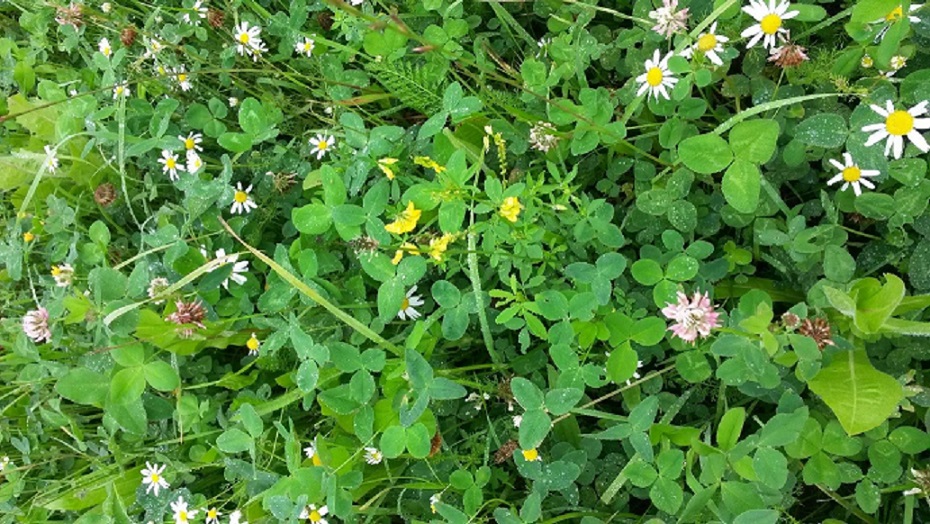Background
| Grassland comprises 50 % of the total UK land area and is a crucial resource for the ruminant livestock industries within the agricultural sector. This land is predominantly sown with ryegrass: a high yielding species that can provide good forage but is reliant upon application of sufficient nitrogen fertiliser, and susceptible to drought. Nitrogen fertiliser is expensive and has a high carbon and nitrogen footprint. Therefore, it is important to consider whether there are viable alternatives to pure ryegrass pasture that are more environmentally friendly.
There are many other plants that can be used for forage including legumes (e.g. clover) and herbs/forbs (e.g. chicory or plantain). Research has shown that grass pasture can be enhanced by the addition of legumes and herbs. Legumes capture atmospheric nitrogen as compounds that are used by the plant, replacing the need for nitrogen fertiliser, and some legume/herb species are deep rooting, improving soil structure and providing resilience to drought and flooding. In this way, mixed species work together to fulfil different functions, and potentially increasing the yield of the whole pasture above the yield of any one species sown alone. ObjectivesThe DiverseForages Project is a five-year project funded by the Sustainable Agriculture Research and Innovation Club (SARIC), which is led by the University of Reading in collaboration with Duchy College, Rothamsted North Wyke, and Cotswold Seeds. The ultimate aim of the project is: “To achieve acceptable yields of good quality forage for livestock production whilst having a positive and long term impact on the environment.” Three forage mixtures comprising six, twelve or seventeen species (of those species pictured below) have been established and will be compared to fertilised ryegrass at multiple research sites and farms running from 2016-20. Outcomes and ImpactThe project aims to produce guidelines that will allow farmers to incorporate multi-species forages into their systems such that biomass yield, forage quality, and pasture botanical composition are optimised. The forage mixtures will also be tested for their resilience to drought and waterlogging to assess how they can assist livestock farmers in coping with extreme weather conditions. A further element of the project will explore plant-animal interactions by grazing multi-species mixtures with growing beef steers and measuring their growth rate, nitrogen use efficiency and methane production. The project also aims to bring together a network of growers, advisors, seed companies and policy makers who have shared enthusiasm for multi-species pasture mixtures through setting up demonstration farms and holding workshops. Key university staffProfessor Chris Reynolds , Professor of Animal & Dairy Science A.K. Jones, Head of Applied Unit, Animal Dairy & Food Chain Sciences Martin Lukac, Associated Professor, Agri-Environment Related Publications |
| Effect of selected plant species within biodiverse pasture on in vitro fatty acid biohydrogenation and tissue fatty acid composition of lamb. Animal. ISSN 1751-732X |

